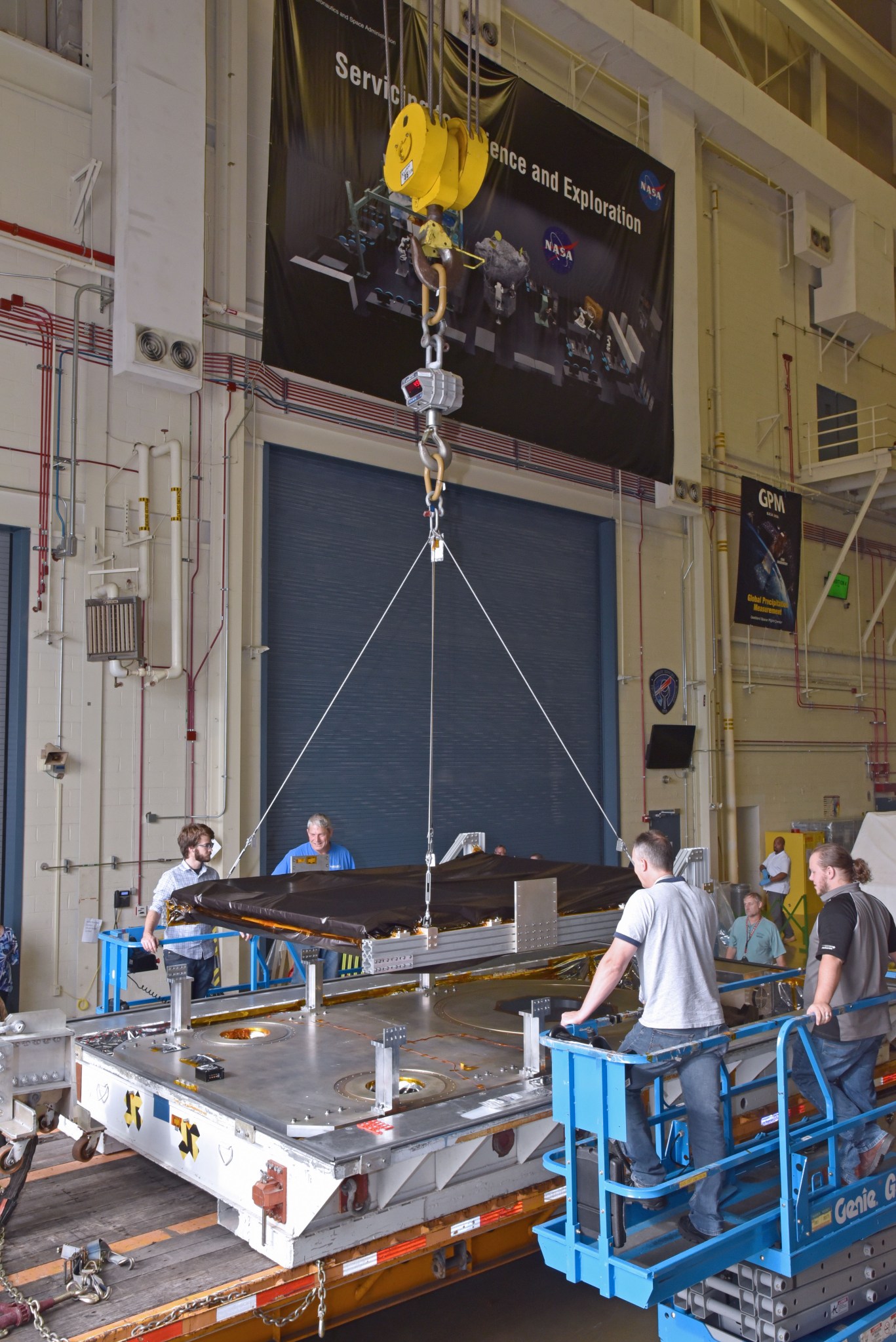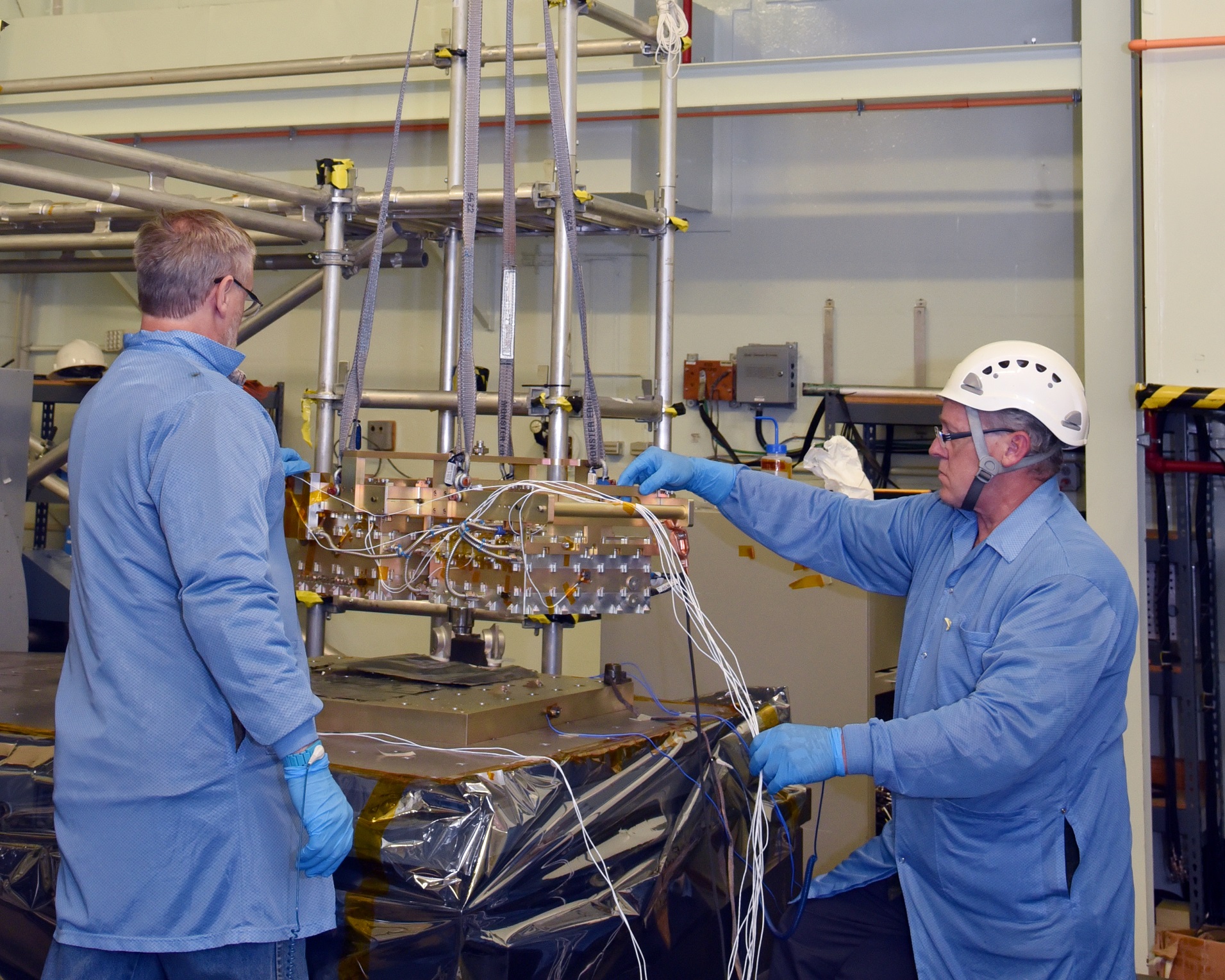NASA’s Laser Communications Relay Demonstration (LCRD) mission has begun integration and testing at NASA’s Goddard Space Flight Center in Greenbelt, Maryland. The mission will demonstrate how a transition from radio to laser communications will exponentially improve the way we connect with astronauts and spacecraft.
“LCRD is a big step in the evolution of space communications,” said Dave Israel, LCRD’s principal investigator. “LCRD will demonstrate how laser communications technologies can be applied to significantly enhance the capabilities of NASA’s communications infrastructure.”
Until recently, NASA spacecraft have wholly depended upon radio communications. Now, NASA is developing cutting-edge laser communications technologies in a paradigm shift from exclusively radio communications to a hybrid of radio and laser.
Laser communications could provide 10 to 100 times better data rates than radio due to higher bandwidth. This means that laser communications can transmit more data at a time than radio, even though both communication types can only travel as fast as the speed of light. To transmit a one-foot resolution “Google map” of the entire Martian surface, the best radio frequency communications system would take nine years to send all the data. Laser communications could do it in nine weeks. Additionally, laser communications systems take up much less area and weight for the same (or better) data rates than radio systems.
The LCRD mission continues the legacy of the Lunar Laser Communications Demonstration (LLCD), which flew aboard a moon-orbiting spacecraft in 2013. Overall, compared to traditional communications systems on spacecraft today, LLCD used half the mass, 25 percent less power, and still transmitted six times as much data per second.
LCRD will pioneer the relay of data through lasers. The mission will demonstrate the feasibility and benefits of laser communications in future networks. Integration and testing, underway now at Goddard, is a crucial step in ensuring these technologies perform in the harsh environment of space.
“There are three phases to integration and testing leading up to launch,” said Glenn Jackson, LCRD payload project manager. “We’re on track to finish the first phase, payload integration, by the end of December. The next phase is to test the entire payload in a flight environment including electromagnetic, acoustic and thermal vacuum testing.”
Testing takes place in Goddard’s Environmental Test Engineering and Integration Facility. The facility ensures that every instrument is launch-ready, testing them under conditions mimicking launch and space.
A 42-foot tall acoustic test chamber exposes instruments to launch sounds equivalent to 150 decibels, or the volume of a jet take-off from 80 feet away. A thermal vacuum chamber chills the spacecraft to sub-zero temperatures in an artificial vacuum.
“Integration and testing are all about making sure the instruments are speaking to each other, working together,” said Bill Potter, project manager for LCRD’s integration and testing activity. “We have a team of about 60 engineers across a number of disciplines making sure the device works as intended in the space environment.”
Alongside testing at Goddard, NASA is calibrating Optical Ground Station 2, one of two ground stations that will communicate with LCRD. The station sits atop a mountain in Hawaii to avoid transmission interference from cloud coverage. NASA’s Jet Propulsion Laboratory in Pasadena, California, operates LCRD’s other ground station at a facility in Table Mountain, California.
LCRD technologies will, once proven, be leveraged aboard two upcoming NASA missions, the Integrated LCRD Low-Earth Orbit User Modem and Amplifier Terminal (ILLUMA-T) and the Optical-to-Orion (O2O) project.
ILLUMA-T will fly aboard the International Space Station as the first demonstration of a fully operational end-to-end laser communications system. It will provide the station with a state-of-the-art laser communications terminal with improved size, weight, power and data rates over comparable radio systems.
NASA plans to fly O2O aboard the Orion spacecraft on the first flight with astronauts, leveraging laser communications for future human spaceflight. Its higher data rates will enable astronauts to video conference with Earth and stream high-definition video of exploratory missions beyond low-Earth orbit.
The recent launch of NASA’s last Tracking and Data Relay Satellite closed a chapter in the history of space communications. Future generations of Space Network satellites will incorporate laser technologies developed in this decade. The LCRD mission is an important milestone of that journey.
The LCRD mission is a collaboration between NASA’s Space Technology Mission Directorate and NASA’s Space Communications and Navigation program office, and is being developed in cooperation with the MIT Lincoln Laboratory. The LCRD payload will be onboard a U.S. Air Force spacecraft as part of the Space Test Program (STP-3) mission and is scheduled to launch in 2019.
Visit the Exploration and Space Communications division’s website for more information about LCRD and laser communications.































